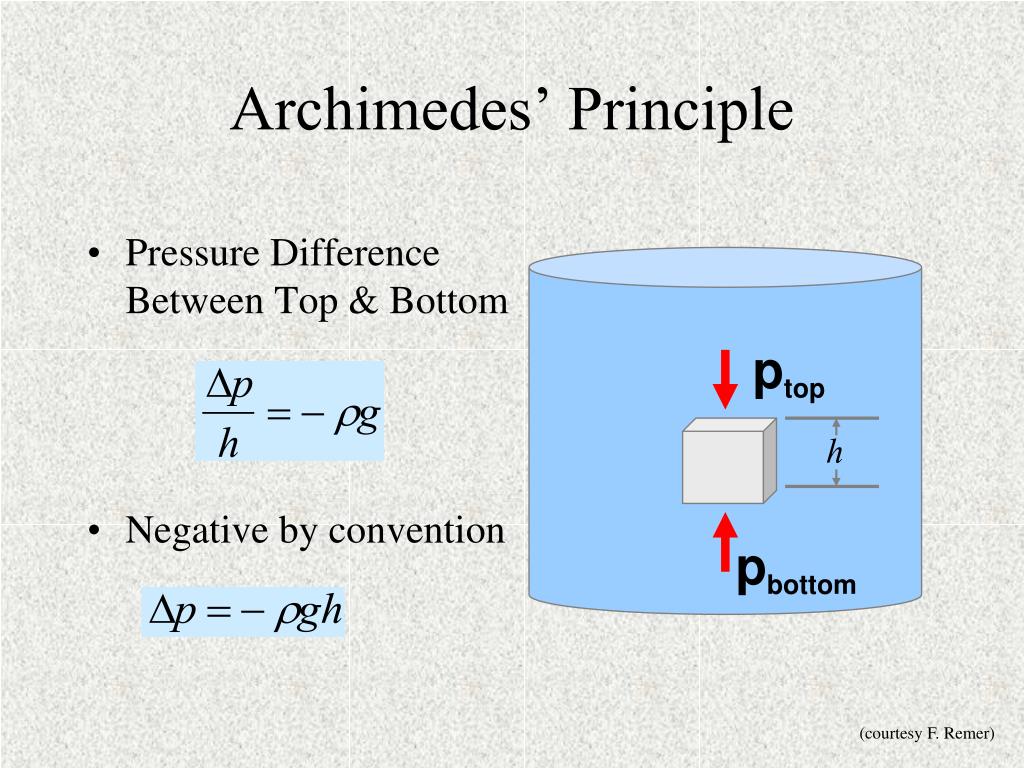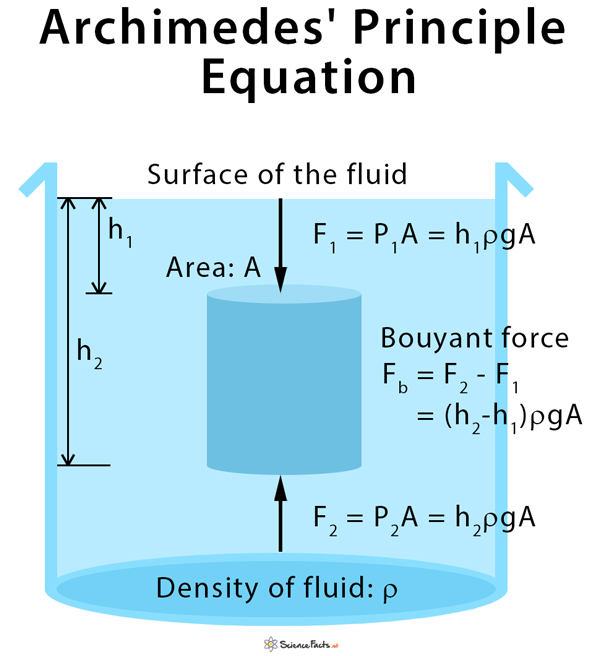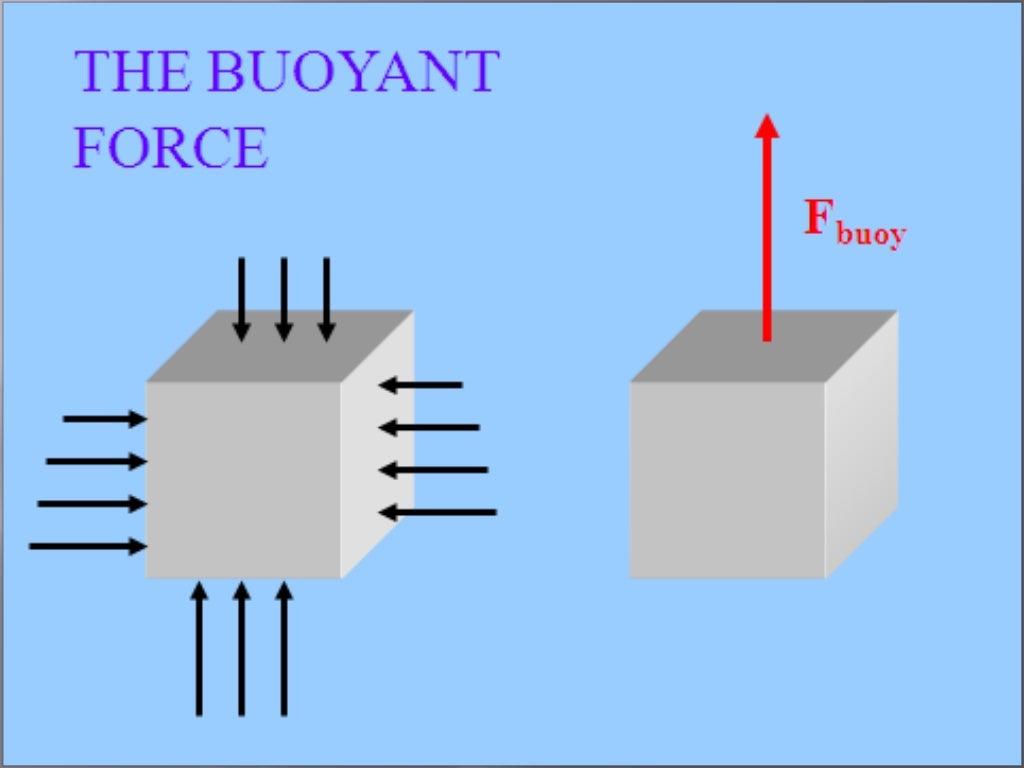
The buoyancy force does not depend on the shape of the object, only on its volume.The buoyancy force on hot-air balloons, dirigibles and other objects can be calculated by assuming that they are entirely submerged in air.


The buoyancy force always points upwards because the pressure of a fluid increases with depth.The buoyancy force is caused by the pressure exerted by the fluid in which an object is immersed.Physics Question Pack Passage 12 Question 72 Otherwise, the fraction submerged becomes greater than one-a sign that the object does not float at all, but it sinks! To be more precise, the average density is defined as the total mass of an object divided by its total volume: ρ = m / V.Ģ) This formula makes sense only if the density of the object is smaller than the density of the fluid. For instance, a steel ship is actually mostly filled with air (think of the corridors, cargo holds, etc.), so its average density is between that of air and steel. This can be much less than the density of the material the object is made of. There are a couple things to note about this expression:ġ) Note that it mentions the average density of the object. Since the object floats, its mass and that of the displaced fluid are equal, and so they cancel from the equation, leaving: Every ship, submarine, and dirigible must be designed to displace a weight of fluid equal to its own weight. This is often called the “principle of flotation” where a floating object displaces a weight of fluid equal to its own weight. When any boat displaces a weight of water equal to its own weight, it floats. So, for a floating object on a liquid, the weight of the displaced liquid is the weight of the object. But the Archimedes principle states that the buoyant force is the weight of the fluid displaced. This follows immediately from the Archimedes’ principle, and the fact that the object is completely submerged (and so the volume of the fluid displaced is just the volume of the object).Īn object floats if the buoyancy force exerted on it by the fluid balances its weight. In general, the buoyancy force on a completely submerged object is given by the formula: The Archimedes principle is easiest to understand and apply in the case of entirely submerged objects. Therefore, the buoyancy force on the original object is equal to the weight of the “displaced fluid.” The Archimedes principle is valid for any fluid-not only liquids (such as water) but also gases (such as air). However, we also know that the buoyancy force on the fluid must be equal to its weight, as the fluid does not sink in itself. The buoyancy force on this amount of fluid must be the same as on the original object. Imagine that we replace the submerged part of the object with the fluid in which it is contained. The reasoning behind the Archimedes principle is that the buoyancy force on an object depends on the pressure exerted by the fluid on its submerged surface. The principle can be stated as a formula:

In other words, to calculate the buoyant force on an object we assume that the submerged part of the object is made of water and then calculate the weight of that water. The buoyant force is always present in a fluid, whether an object floats, sinks or remains suspended.Ī simple method to calculate buoyancy is from the Archimedes principle, which states that the buoyant force exerted on a body immersed in a fluid is equal to the weight of the fluid the body displaces. If the buoyant force equals the object’s weight, the object will remain suspended at that depth. If the buoyant force is less than the object’s weight, the object will sink. If the buoyant force is greater than the object’s weight, the object will rise to the surface and float. The result is a net upward force (a buoyant force) on any object in any fluid. When an object is immersed in a fluid, the upward force on the bottom of an object is greater than the downward force on the top of the object. The buoyant force on an object can be calculated using the Archimedes principle.


 0 kommentar(er)
0 kommentar(er)
